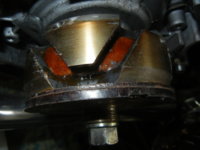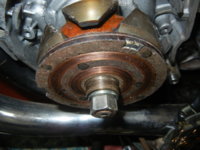On my way home this evening, my left turn signal stopped flashing, but the right one was working fine. Then the right one stops. As I get home I see my headlight start to dim. I turn the bike off, check to make sure nothing came unplugged behind the headlight, start it back up and the headlight no longer works at all.
Turn signals no longer flash and when I turn them on at idle, they kill the bike. Checked my grounds, and taillight still works fine, but the taillight indicator is now on between the speedo. Just seems like a related list of things that happened all at once. If these screams out something obvious to someone, please shout out me and call me dumb for not knowing, it would be much appreciated. All electrical had been working fine since adding new turn signals and taillight a year ago.
After looking around online, it seems it could be related to the Reserve Lighting Unit, Light Checker, or Safety Relay. Now i thought my bike was a '79 special, but there is not a 4 fuse box under the seat, so I guess it is just a standard? So doesn't seem like a fuse issues if the turn signals and light still come on.
Any help is much appreciated for this wiring rookie.
Turn signals no longer flash and when I turn them on at idle, they kill the bike. Checked my grounds, and taillight still works fine, but the taillight indicator is now on between the speedo. Just seems like a related list of things that happened all at once. If these screams out something obvious to someone, please shout out me and call me dumb for not knowing, it would be much appreciated. All electrical had been working fine since adding new turn signals and taillight a year ago.
After looking around online, it seems it could be related to the Reserve Lighting Unit, Light Checker, or Safety Relay. Now i thought my bike was a '79 special, but there is not a 4 fuse box under the seat, so I guess it is just a standard? So doesn't seem like a fuse issues if the turn signals and light still come on.
Any help is much appreciated for this wiring rookie.


